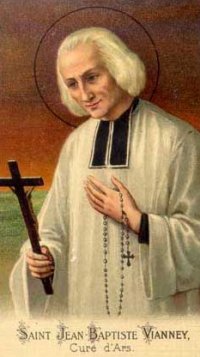
It is Trinity Sunday, the solemnity that speaks to us about how God revealed himself to us. He told us he is Father, Son and Holy Spirit; one God in three persons. We would never have figured this out had he not told us this. Augustine meditated on it for hours and he couldn’t figure it out. Pope Benedict XVI knows Augustine pretty well, and did his doctorate on him. He loves Augustine and quotes from him often. And not only quotes, even symbols connected with the great doctor appear in the Pope's entourage, like the symbol of the sea-shell. This might be a bit of a stretch, but think back to April 24, 2005, the day he was installed as Pope in St. Peter’s Square. You might have noticed that his chasuble featured sea-shell designs. A few weeks later we saw that his new papal shield has prominently featured a sea-shell as well. Now here’s the stretch: This sea-shell apparently comes from a story in the life of St. Augustine (+430). You’ve probably heard the story. He’s a bishop by now and he was trying to come to grips with the Trinity for what became his multi-volume work
De Trinitate. As he was walking along the beach, trying to take in God's infinity through the infinite horizon of the sea, he saw a young girl going back and forth into the sea, filling a scallop shell with water that she proceeded to pour into a hole she had dug in the sand. "What are you doing," Augustine tenderly asked. "I'm trying to empty the sea into his hole," the child replied. "How do you think that with a little shell," Augustine retorted, "you can possibly empty this immense ocean into a tiny hole?" The little girl countered, "And how do you, with your small head, think you can comprehend the immensity of God?" As soon as the girl said this, she disappeared, convincing Augustine that she had been an angel. St. Augustine, as smart as he was, and our new Holy Father, as great a theologian as he is, both recognize that before the mystery of the Blessed Trinity, one can never understand everything
So we can’t fit the vast mystery of the Blessed Trinity into our heads. Understanding it perfectly is way beyond the capacity of our little nuggins.
Yet once he tells us, we can sense intuitively that it could be no other way. Yes we are monotheists, but if God were not a Trinity, we would not be able to say that God is Love. If he were all alone, his love of himself would be an exarcerbated form of narcissism and egoism. It wouldn’t be real love. God is love in himself, before time, because there is eternally in him a Son, the Word, whom he loves from an infinite love which is the Holy Spirit.
Raniero Cantalamessa said it beautifully:
In every love there are always three realities or subjects: one who loves, one who is loved and the love that unites them. Where God is understood as absolute power, there is no need for there to be more than one person, for power can be exercised quite well by one person; but if God is understood as absolute love, then it cannot be this way.
Which points to the whole question of relations in our life. Without relations there is no love.
The divine persons are defined in theology as “subsistent relations.” This means that the divine persons do not “have” relations, but rather “are” relations. We human beings have relations -- of son to father, of wife to husband, etc. -- but we are not constituted by those relations; we also exist outside and without them. It is not this way with the Father, Son and Holy Spirit. We know that happiness and unhappiness on earth depend in large part upon the quality of our relationships. The Trinity reveals the secret to good relationships. Love, in its different forms, is what makes relationships beautiful, free and gratifying. Here we see how important it is that God be seen primarily as love and not as power: love gives, power dominates.






